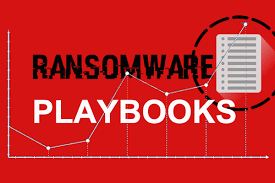
Introduction
Ransomware attacks have become one of the gravest cybersecurity threats to healthcare organizations. Not only do they jeopardize sensitive patient data, they also disrupt clinical operations and threaten patient safety. In the wake of an attack, a robust post-incident response framework is essential to contain damage, recover systems, comply with regulations, and learn from the event to prevent future incidents.
In this blog, we’ll provide a healthcare ransomware incident response playbook, present lessons learned from real-world attacks, and walk through a detailed post-incident response framework tailored for hospitals, clinics, and health systems. We also include relevant SEO keywords such as ransomware in healthcare, healthcare incident response, post-incident review, breach recovery, ransomware playbook, healthcare cyber resilience to improve search visibility.
Why Healthcare Is a Prime Target for Ransomware
Before diving into the response framework, it helps to understand why healthcare is so heavily targeted:
-
High value of health data: Patient records, clinical data, billing info are extremely sensitive and monetizable.
-
Mission critical operations: Hospitals cannot afford prolonged downtime; attackers know this and leverage urgency.
-
Legacy & medical devices: Many medical devices run outdated OS or have limited security controls.
-
Third-party & vendor risk: Partner systems, EHR vendors, suppliers are attack vectors.
-
Regulatory pressure & reputational risk: Breach notification laws (HIPAA, GDPR, regional equivalents) make consequences steeper.
According to American Hospital Association (AHA), ransomware attacks on hospitals are increasingly treated as “threat-to-life crimes” because they can impact patient care directly. American Hospital Association+1
Sources of ransomware ingress in healthcare often include phishing emails, exploitation of RDP (Remote Desktop Protocol), unpatched systems, removable media, and compromised vendor networks. Compliance Hub+1
Given this environment, healthcare institutions must not just rely on prevention, but have a resilient, practiced response posture.
Core Phases of a Ransomware Incident Response Framework
A mature incident response (IR) strategy structures its actions into phases. For ransomware in healthcare, these typically align with:
-
Preparation
-
Detection & Analysis (Identification)
-
Containment
-
Eradication
-
Recovery
-
Post-Incident Review & Lessons Learned
This six-phase lifecycle is validated across industry playbooks. Exabeam+2Rapid7+2
Let’s unpack each phase in the context of healthcare.
1. Preparation
Objective: Ensure the organization is ready before an incident strikes.
Key actions:
-
Establish a Healthcare Cyber Incident Response Team (HCIRT / CIRT) with defined roles (Incident Commander, Forensics Lead, Communications, Legal/Compliance, Clinical Ops, IT Ops).
-
Develop and document a ransomware playbook specific to healthcare scenarios, covering escalation paths, internal/external notifications, regulatory reporting.
-
Define severity levels and classification criteria (e.g., full encryption vs limited impact).
-
Integrate with business continuity / clinical continuity plans to ensure essential medical services remain functional.
-
Maintain trusted backups (offline, immutable, tested) for critical systems (EHR, PACS, lab systems).
-
Deploy detection & prevention tools: endpoint protection, EDR (Endpoint Detection & Response), intrusion detection systems, network segmentation, logging & SIEM.
-
Run tabletop exercises, red team drills, simulated ransomware scenarios regularly to test readiness. Censinet+2HHS 405(d)+2
-
Maintain stakeholder contacts: legal, law enforcement, insurance, external incident response vendors, PR/communications.
-
Pre-draft communication templates (internal, external, media) for ransomware incidents. California Hospital Association+1
-
Vendor and third-party readiness: include clauses in contracts about incident response, cooperation and data handling.
If healthcare institutions skip or underinvest in preparation, every subsequent phase becomes more chaotic and damage grows.
2. Detection & Analysis (Identification)
Objective: Detect ransomware activity quickly, assess scope, and raise response.
Key practices:
-
Monitor logs, alerts, anomalous behavior (rapid file encryption, unusual file I/O, lateral movement).
-
Use endpoint detection & response (EDR) and threat intelligence feeds to detect known ransomware signatures and indicators of compromise (IOCs).
-
Classify the attack: is it “locker ransomware” (encrypting), extortion (data exfiltration), or double/extortion (encrypt + leak).
-
Identify initial point of compromise (phishing email, RDP, vendor).
-
Map out impacted systems: EHR, PACS, lab, billing, HVAC, connected medical devices, backups.
-
Isolate impacted nodes (disconnect from network if safe).
-
Maintain forensic chain of custody if required for legal or regulatory proceedings.
-
Escalate to HCIRT with defined thresholds.
-
Trigger backup and fallback systems if required.
Speed in detection can significantly limit the spread and damage. Early warning is essential.
3. Containment
Objective: Prevent the ransomware from spreading further, limit damage.
Containment techniques in healthcare:
-
Network segmentation / micro-segmentation: block cross-segment traffic.
-
Quarantine infected hosts, shut off their network access.
-
Disable unnecessary services (e.g., RDP, SMB) across the environment temporarily.
-
Block command & control communications, block known malicious IPs/domains.
-
Use firewalls, NAC (network access control) to isolate suspicious devices.
-
Prevent execution of further malicious processes.
-
If backups or shadow copies exist, prevent their encryption by ransomware.
-
Decide whether to allow limited read access to critical systems to maintain minimal operations (if safe).
-
Coordinate with clinical leadership on what systems can remain online vs must be shut down.
Containment is a balancing act in healthcare: you must protect patient safety while limiting further compromise.
4. Eradication
Objective: Remove ransomware and eliminate all traces of malicious actors.
Actions:
-
Use forensic tools to scan and remove malware, ransomware binaries, rootkits, backdoors.
-
Patch vulnerabilities, close exploited holes.
-
Change credentials for compromised accounts, enforce password reset and MFA.
-
Harden systems: security configurations, endpoint agents, firewall rules.
-
Ensure that lateral attack paths are closed — check for persistence, scheduled tasks, scripts.
-
Validate that no dormant malware remains.
-
If third-party or vendor systems contributed, ensure they cooperate with remediation.
-
Retain forensic artifacts for later review or legal needs.
-
Document all eradication steps in the incident log.
Healthcare settings often complicate eradication because certain devices or systems (medical devices) cannot be fully patched or taken offline easily — extra care is needed to ensure patient safety.
5. Recovery
Objective: Restore systems and operations to normalcy, safely and securely.
Steps:
-
Prioritize restoration: bring up critical systems first (EHR, surgical systems, ICU, diagnostics).
-
Restore data from trusted backups (immutable/offline) after verifying they’re clean.
-
Validate integrity of restored systems (scan, test).
-
Bring systems back to the network gradually, monitor for anomalous behavior.
-
Monitor restored systems closely (logs, alerts).
-
Reconnect segments cautiously; reopen services gradually.
-
Communicate status to stakeholders (clinical staff, leadership).
-
If business continuity fallback systems were used, transition back to main systems.
-
Engage vendors or service providers for support as needed.
Recovery in healthcare must be done carefully, often under time pressure, because patient care depends on system availability.
6. Post-Incident Review & Lessons Learned
Objective: Learn from the event, improve defenses, update playbooks and posture.
Activities:
-
Conduct a post-mortem / “lessons learned” session with all stakeholders.
-
Compare how the incident was handled vs the expected playbook actions.
-
Identify gaps in preparation, detection, communication, containment, remediation.
-
Update the ransomware playbook, IRPs, policies, SOPs.
-
Enhance controls and monitoring where weaknesses were found.
-
Re-run threat modeling for critical systems.
-
Train staff on new or revised procedures.
-
Share sanitized findings internally (and externally where permissible).
-
Report to regulators, insurers, and stakeholders as required by law (HIPAA, GDPR, health regulation).
-
Perform metrics and KPIs: time to detection, time to containment, systems down hours, data lost, cost, clinical impact.
-
Feed insights back into your preparedness phase (continuous improvement).
Post-incident work is critical: it's the only way to reduce the chance of recurrence and evolve your security posture.

Lessons Learned & Case Studies in Healthcare
Here are some instructive lessons from real ransomware incidents in healthcare settings:
HSE (Health Service Executive, Ireland)
In 2021, the HSE was hit by Conti ransomware. The attack forced a nationwide shutdown of health IT systems, canceled appointments, and delayed services. Wikipedia
Lessons: robust backup strategy, better segmentation, fast detection, and disaster recovery planning are essential.
General trends & recommendations
-
Attackers now often use double extortion — encrypt data and threaten to leak it publicly.
-
Even if ransom is paid, attackers may not delete stolen data or may re-extort.
-
Healthcare providers must treat ransomware as a clinical continuity risk, not just IT issue.
-
Frequent tabletop exercises and cross-department drills are indispensable.
-
Regulatory compliance (HIPAA, local health data protection laws) must be baked into incident response policies.
In many reports, healthcare providers that responded faster, had segmented networks, and reliable immutable backups suffered less operational downtime and data loss.
Key Healthcare-Specific Considerations & Challenges
-
Medical devices / IoMT (Internet of Medical Things) often run legacy firmware and can’t be patched easily.
-
Clinical continuity: you may need to maintain minimal operations even in an ongoing compromise.
-
Regulatory compliance & breach notification: healthcare is subject to stricter laws (HIPAA, GDPR, health data mandates).
-
Patient safety & life-critical systems: you must avoid actions that endanger patients (e.g. shutting down ventilators).
-
Third-party vendor dependencies: external systems may need to be involved in response and remediation.
-
Limited cybersecurity staffing in hospitals: many healthcare institutions lack dedicated cyber teams; reliance on external support is common.
-
Reputational & stakeholder pressures: media, patient trust, insurer scrutiny add extra pressure during response.
-
Coordination with law enforcement / regulators / ISACs: in many jurisdictions, health ISACs or government agencies must be notified. For instance, the CISA “StopRansomware” guide recommends early coordination and appropriate disclosure. CISA
-
Information sharing: anonymized sharing with health sector cybersecurity bodies helps improve communal defenses.
Best Practices & Recommendations
-
Immutable, offline backups tested regularly
-
Network segmentation & zero trust for internal systems
-
Least privilege access, multi-factor authentication (MFA)
-
Continuous monitoring, EDR, anomaly detection
-
Vendor risk management / supply chain security
-
Regular drills, tabletop exercises, IR testing
-
Pre-established relationships with IR firms, legal, forensics
-
Regulatory & breach notification playbook ready
-
Post-incident review and feedback loops
-
Cross-functional coordination across clinical, IT, legal, PR
When implemented, these practices significantly reduce dwell time, limit damage, and accelerate recovery.

Category: Healthcare
